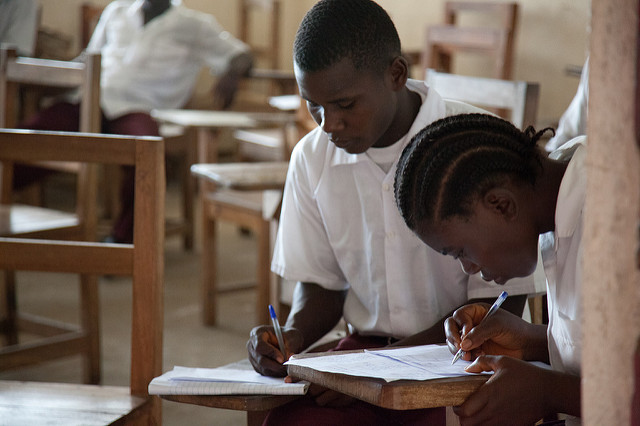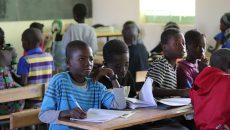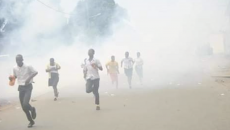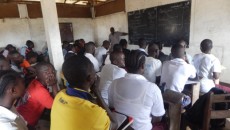Liberia’s education system is failed and needs bold reforms. The evidence is clear:  42 percent of primary-aged children in Liberia are currently out of school; 50 percent of the children that are in school join 3 to 6 years late; 20 percent of children enrolled in primary school complete secondary school; 55 percent of 15 to 25-year-olds are illiterate; and about 80 percent of students that make it to 12th grade, end up dropping out due to many factors, including failing to pass their national standardized exams.
This reality demands urgent attention, but not any quick fix will solve this problem. Such is my opinion concerning the Partnership Schools for Liberia. Let’s be clear: my argument is not a politically-motivated, anti-public-private partnership, stick-to-the-old-system spiel.
I am writing as a young Liberian with a vested interest in the future of our country and the development of our human capital. I was educated in this broken system. I’ve worked in both the private and public sectors, and have intimately witnessed the developmental needs of our country.
I have interacted with talented young people and gathered valuable insights into how they developed their personal capacity. Moreover, I’ve spent time studying education systems and the economics of education, all of which have given me an informed perspective on PSL.
Despite its good intention, here’s why I think PSL won’t fix Liberia’s education system.
Let’s examine education financing. One of the most critical aspects of every education system is how it is financed. Today, governments face several budget constraints and have to choose between short-term urgent needs and long-term payoffs. This task can be challenging, especially for developing countries. In the case of Liberia, the government spends only 2-3 percent of its GDP of US$3.7 billion on education.
Financing of PSL is still unclear. According to a factsheet from one of the PSL operators, the partnership is entirely funded by international donors, and will not use any funds reserved for existing educational programs. However, according to the minister of education, the schools will remain within the public sector, owned, financed, regulated, and quality assured by the government, with support from external donors.
Other sources suggest that the Ministry of Education will provide schools in the pilot with teachers, administrative staff, and school buildings, all paid for from the education budget. Outside donors — not yet publicly identified — will be supplying another US$50 to US$60 per student.
Now here is my issue: foreign investments or philanthropy funding have historically proven to have little impact on education over the years. UNICEF’s former global chief of education points out that “paradoxically, post-conflict financing like the Education Pooled Fund in Liberia may have increased dependency, reduced accountability, and compromised progress.â€
This is the challenge of building an education system with significant reliance on external funding. External funds are needed in a country like Liberia. However, these funds also work as disincentives for the government to build the systems they need in order to address these problems, and since donors are not fully accountable to governments, they implement projects and make investments that are unaligned with the government’s priorities.
For example, USAID has an approximately US$80 million education budget in Liberia – that’s almost twice what the national budget for education was last year (US$45 million). The European Union has about 32 million euros. That’s almost the national budget for education.
With all this external donor funding, why have we not seen a turnaround in education in Liberia? I’ll argue that the vision and commitment needed to overhaul this system has been missing.
In terms of long-term human capital development, PSL falls short. Human capital development focuses on the skills and attainment that result in a productive labor market. Â These skills are chiefly developed in secondary and tertiary education, whereas primary school builds the foundation.
While we do know that primary education investments yield the most return – as seen in this case study on India – what happens beyond primary school in a country like Liberia is very pivotal to the question of human capital development.
Secondary and tertiary institutions in Liberia are equally, if not more, failed than the primary sector. What good is it to have kids receive high test scores in primary schools to then enroll into broken secondary and tertiary schools where they pay bribes for grades, and where there are no programs to assist in their personal and intellectual growth?
As Hanushek writes in “Economic growth in developing countries: The role of human capital,†improvements in long-run growth are closely related to the level of cognitive skills of the population. A neglect of secondary and tertiary sectors, where these skills are developed, is indicative of a short-term solution to a problem that demands holistic, long-term planning.
For PSL to be pinned as a potential savior of Liberia’s failed education system, it has to be inclusive of all sectors of education. I think if the crafters had committed the amount of time required to overhaul an entire system, they would’ve developed something along these lines.
Finally, for PSL to succeed, the government needs to have the capacity to regulate private operators and ensure they’re adhering to the education goals of the country.
According to the released information on PSL, the government will manage and regulate the sector while the private providers will employ innovative approaches to improving student outcomes.
Ultimately, as Tina Rosenberg, a Pulitzer Prize winner and journalist writes, “When partnerships work well, it’s when governments act like the commissioner, quality assurer, regulator, and financer of education.†This has to be the case for PSL to be a viable solution.
However, this is the concern currently: that all of the operators in this partnership do not have the expertise or capacity to manage an education system. Take Bridge for example. The company is in its startup phase and currently has a team that is stretched, working long hours in Boston to manage the current schools they have. Here’s some of the reviews from the company’s employees: Bridge is the largest operator in this initiative.
There’s talk about how a successful few pilots will lead to a national system that gets transferred to the government. Many in the development and public sector know how many “successful†private initiatives have failed in their transition to government. I truly hope this will be the outlier, but honestly, I don’t believe so.
Education is a long-term, highly complex project that requires careful and deliberate interventions. Let’s treat it as that! For years we’ve known what the real problems are (teachers, infrastructure, curriculum, financing, etc). Why haven’t we explored solutions that directly address those issues?
Programs such as Teach For America or a national service could solve our teacher crisis. Teach for America teachers outperform new teachers in the US. Similarly, structural and holistic education change models such as the one seen in Haiti with Summits are the kinds of change Liberia needs.
Featured photo by David Trotman-Wilkins/Together Liberia



